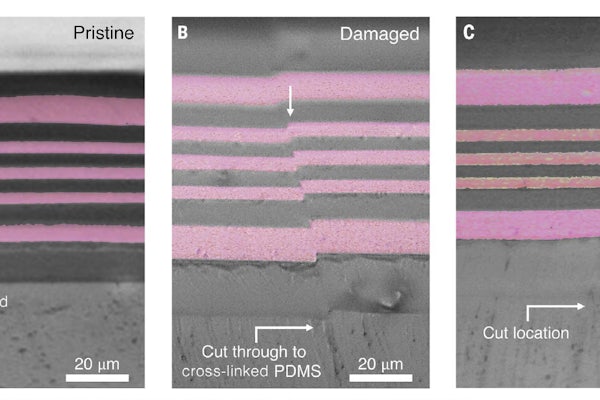Multilayered electronic skin can autonomously heal and realign
Self-healing skin developed by Christopher Cooper enables soft robotics to recover from mechanical damage and retain full functionality

Christopher Cooper, who will join the McKelvey Engineering faculty in August 2024 as an assistant professor in the Department of Energy, Environmental & Chemical Engineering, recently achieved the first demonstration of a multilayered, self-healing electronic skin that can automatically realign during healing. The results were published earlier this summer in Science.
This advance brings engineers closer to mimicking human skin, which has multiple layers that must all reassemble and realign correctly during the healing process, Cooper said in a press release published by Stanford University, where he earned a doctorate. Layering is critical to skin’s many remarkable properties, including sensing, stretching, shielding and, of course, healing.
The development of a fully autonomous electronic skin that can heal and realign after sustaining punctures, scratches, slices and other mechanical damage opens new possibilities in soft robotics. Cooper’s multilayered composite skin can form thin-film pressure sensors, magnetically assembled soft robots, and underwater circuits, which all readily self-heal after mechanical damage in diverse environments.
The long-term vision is to create devices that can recover from extreme damage, said Cooper, who was the first author of the paper. He envisions devices that can autonomously recover not only from everyday cuts and scrapes but also entirely reconstruct themselves when torn into pieces.
Christopher Cooper spoke on the National Science Foundation’s Discovery Files podcast about his NSF-supported work on a new polymer-based material with electrical and magnetic properties that can autonomously heal itself.




